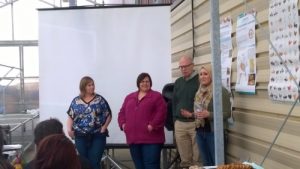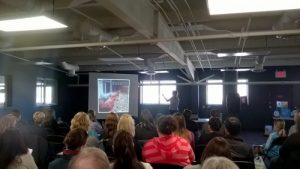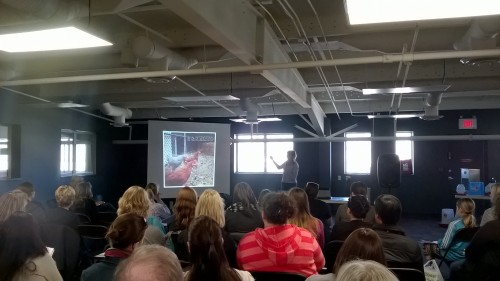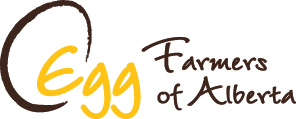Through our partnership with Peavey Mart we put on two small flock workshops.
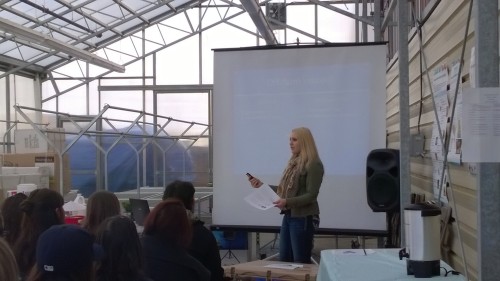
This year in April, through our partnership with Peavey Mart we put on two small flock workshops. The workshops were held in Spruce Grove and Red Deer. The workshops are intended to help answer some questions that new chicken owners face as well as seasoned chicken owners to improve their operation. Supporters of these events include Peavey Mart, Young Agrarians, the University of Alberta, and Alberta Agriculture and Forestry.
Speakers included: Dr. Valerie Carney (Alberta Agriculture), Dr. Frank Robinson (University of Alberta), Rachelle Davidson (University of Alberta), Nichole Boutilier (Alberta Agriculture), Harold Dyck (Peavey Mart Industries), Jest Sidorski (Peavey Mart Industries), and Dana Penrice (Young Agrarians).
Davidson presented the principles of Biosecurity: protecting your chickens from others and others from your chickens. She adapted large scale poultry operations to fit the backyard flock size. One major take home message was that simple habits can have major impacts e.g. boot changes and hand washing! Davidson also displayed different chicken behaviours and explained what behaviours you want or do not want to see in the flock. Some behaviours you do not want to see in a flock include: repetitive pecking, lethargy, huddling, and a silent barn.

She went on to explain, if you see birds that are repetitively pecking it could be for several reasons but two main reasons are: not enough space, and boredom. It is important that each bird have enough space and be provided enrichment such as more roosts, runs, and extra nest boxes. If a bird is found to be lethargic check crop for food, Davidson recommended to separate the individual bird from flock mates and to offer food and water. However if the separated bird does not improve, it is important to call a vet. Huddling birds could indicate that the temperature is too cold or that there is a draft, check temperature and for small cracks where wind could enter the facility. If your barn/coop is silent it could indicate predator presence nearby. Davidson suggests to check for predators, but also check yourself to see whether you may be upsetting the birds from being loud or moving too abruptly.
Robinson explained chicken anatomy and where eggs come from the science behind how an egg is formed and what are the necessary factors needed including nutrients, nesting, and lighting. Some factors that can affect nutrient requirements and intake include genetics, age, sex, reproduction status, environment such as temperature, housing systems, and health status. He explained poultry housing further to include insulation types, nest box styles, and gave tips on what housing styles to choose when raising chickens for either meat or eggs. Robinson emphasized finding a coop that you can enter – for easy cleaning.
Carney presented on egg quality, and how to know what eggs to keep and what eggs to discard from the henhouse. The prescribed way of washing eggs, and how to inspect for abnormalities and what they could possibly mean for your chicken. She also emphasized the importance of having a premise identification number. The Premise ID program was established to plan for, control, and prevent the spread of agricultural diseases.
Penrice gave a farmer perspective on her experience raising heritage chickens. She gave practical advice to book processing early for meat birds, housing systems for free-range, and shared lessons learned on her farm.
Boutilier presented her findings form her benchmarking project that examined backyard flocks and biosecurity protocols.
Thank you to all the participants who were able to join us in the two workshops offered this year. A big shout out to all the individuals who were able to make this happen!
